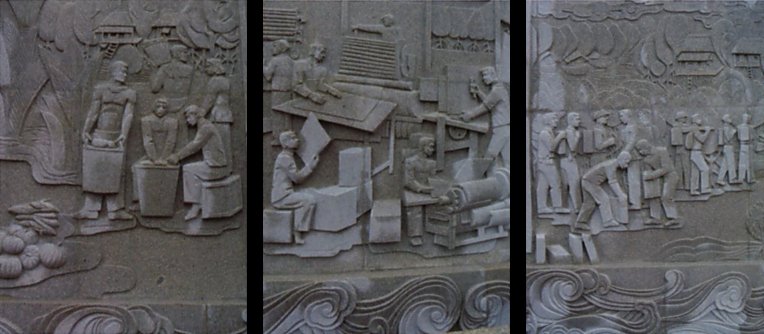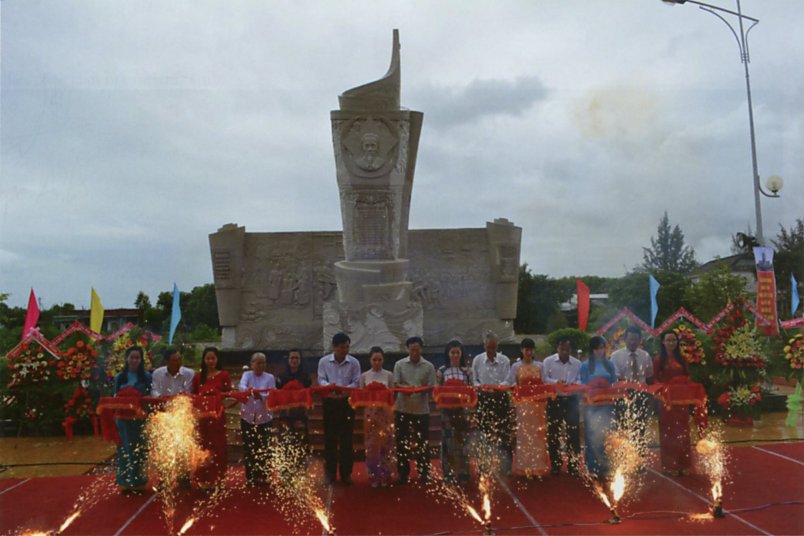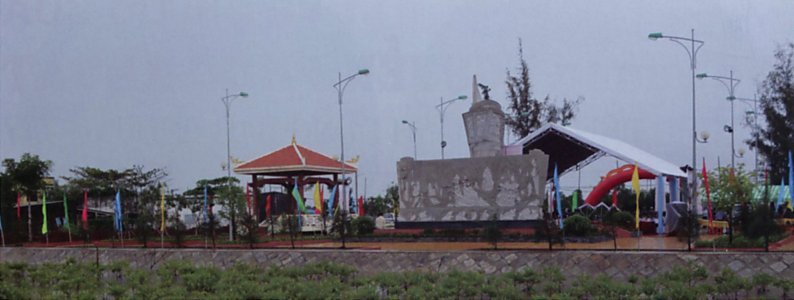The National Monument at the Southernmost Point of the Country
Huỳnh Hoài Hãn, Vietnam Numismatics #1 (10-2017), p33-35

The success of the August Revolution did not last long, on September 23, 1945, the entire South stood up to fight against the French. Faced with the urgent need to issue Vietnamese banknotes to proactively manage the economy, boost production, and ensure a prolonged resistance, on November 1, 1947, President Hồ Chí Minh signed Decree No. 102/SL authorizing the establishment of the Southern Special Printing Board in the military zone of Đồng Tháp Mười (district Mộc Hóa, province Đồng Tháp) headed by Mr. Ngô Tấn Nhơn - special envoy of the Government. To deceive the enemy, the Southern Special Printing Board was codenamed as "Planting and Pruning Department No. 10".
From 1949, to ensure secrecy, the Printing Board was ordered to move to the U Minh military zone. Printing money in the military zone at that time was extremely difficult, but the officers and employees of the Southern Special Printing Board worked selflessly and successfully completed their assigned tasks. Here, banknotes of 1 đồng, 5 đồng and 20 đồng were printed using a foot-operated printing machine on writing paper in large quantities. In 1953, the Southern Special Printing Board operated stably in Tân Hưng Tây (district Cái Nước), when a forest fire broke out. Hundreds of officers, workers, and tons of equipment were relocated to Hàm Rồng, (district Năm Căn, province Cà Mau).

To meet the demand for currency to replace the Indochinese piastre, the Southern Special Printing Board was authorized to print 20, 50, 100 đồng banknotes using modern equipment - a hand-turned offset printing machine - hand-made on jute paper. In early 1954, the Administrative Resistance Committee of Southern Vietnam proposed printing 200 and 500 đồng banknotes, and when the 200 đồng had already been printed, and the design for the 500 đồng was still on paper, the revolution succeeded. The Geneva Agreement was signed on July 20, 1954, marking the completion of the historic mission of the Southern Special Printing Board by November 1954. The total amount of Uncle Ho's banknotes printed in the South and circulating up to that point was approximately 3.6 billion đồng.
During its 6 years of operation in Cà Mau, the Southern Special Printing Board changed locations constantly, every 3 to 6 months, from Cái Tàu (U Minh) to Tân Đức (Đầm Dơi) through U Minh Hạ (Trần Văn Thời), U Minh Thượng (Thới Bình).
Uncle Ho's banknotes were printed in large quantities and circulated throughout the South, playing a significant role in the development of the young Democratic Republic of Vietnam government at that time.
The project was worth about 45 million VND raised by former members of the Printing Board. However, this construction, with its simple design, wasn't a match to the significance, purpose, and dedication of those involved in the currency printing work during that era. In early 2009, the Ministry of Finance proposed upgrading and renovating the Monument. In 2010, the Ministry of Culture, Sports and Tourism decided to recognize the Southern Special Printing Board Monument in Hàm Rồng commune (district Năm Căn, province Cà Mau) as a National Historical Site.
With the authorization of the Ministry of Finance and the investment approval by the People's Committee of Cà Mau province, on June 11, 2012, the project to upgrade and renovate the Monument was approved with the Cà Mau Department of Finance as the investor. The project encompasses an architectural complex featuring a memorial statue, martyrs' memorial, garden, courtyard, fence, lighting system, embankment, sidewalk, kindergarten, and a connecting road from Hàng Dương road to the Đầm Cùng River. The project was initiated on July 27, 2012, with a total investment budget exceeding 20 billion VND, supported by the Ministry of Finance.
After more than two years of construction, on October 6, 2014, the upgraded and renovated monument for the Southern Special Printing Board was reopened in the presence of former Printing Board employees, leaders of the Ministry of Finance, Cà Mau province officials, and many local people.

The Memorial for the Southern Special Printing Department, created by the artists Lê Công Uẩn and Lê Lang Biên, represents the symbol of the torch illuminating the path of the revolution, shaped as a rolled-up banknote with a portrait of Uncle Hồ surrounded by a star, floral patterns, and historical content. Behind the main stelle is the image of a scroll with monumental reliefs, depicting the challenging and honorable activities of the Southern Special Printing Board of organization, printing, and distribution of paper currency to serve as a sharp weapon to fight on the economic, financial, and monetary fronts with the enemy during the resistance war against the French colonialists. The entire monument and reliefs are carved on gray granite with the central torch-shaped stele 7 meters high and the scroll relief 2.5 meters high and 8 meters long.

This is a project of special significance for the Finance industry to honor and recognize the merits and great contributions of the previous generations, passing on the honorable traditions of Vietnamese Finance industry.
For six years of operation, the officers and employees of the Southern Special Printing Board have dedicated themselves and made a worthy contribution to the common cause during the challenging early days of the national resistance. Subsequently, eight soldiers and officers sacrificed their lives during the operation of the Board. It can be said that the achievements of the Southern Special Printing Board are an epic, a milestone in history that the country, and in particular, people of the South will never forget.
